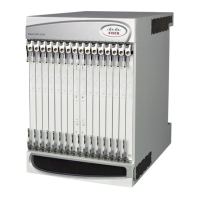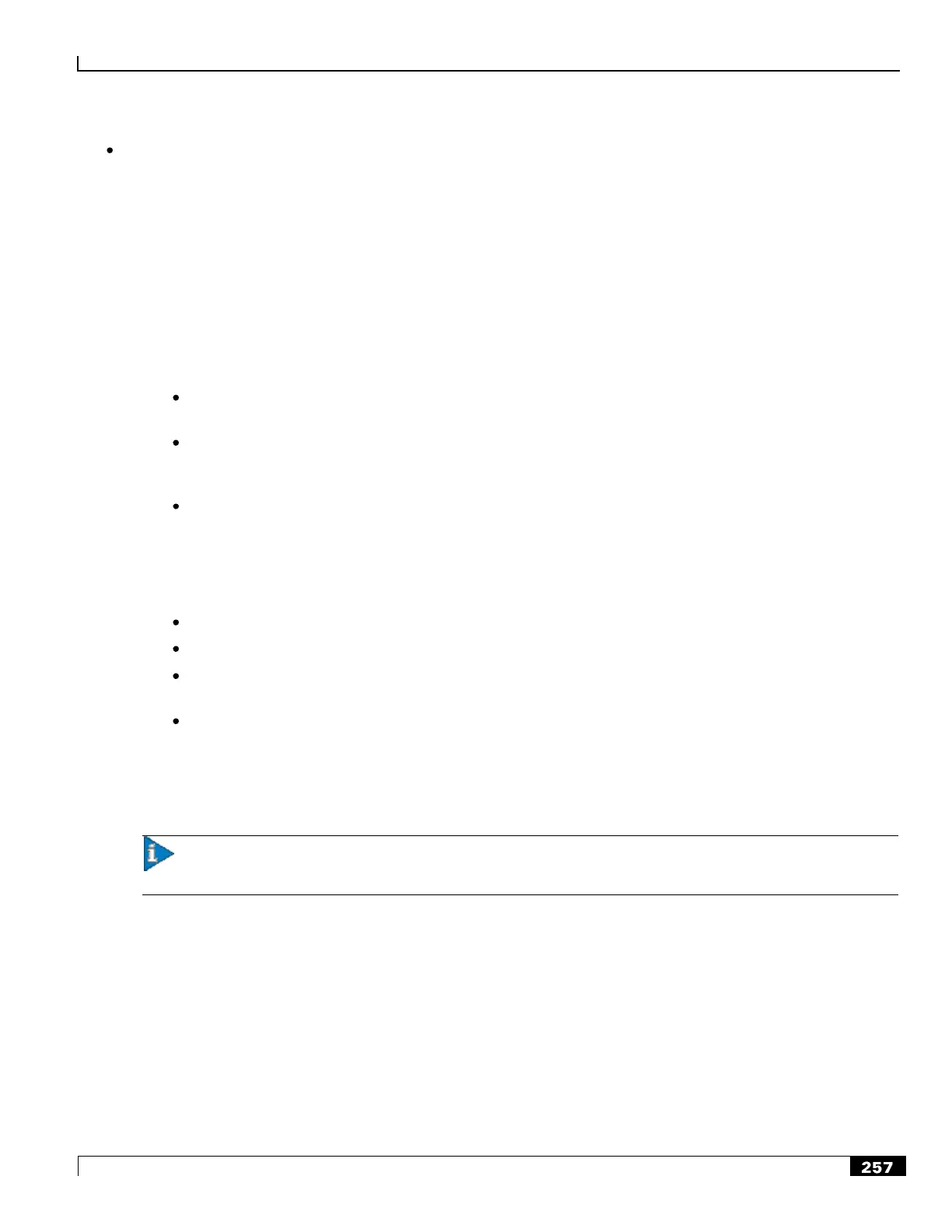CDMA2000 Wireless Data Services
Features and Functionality - Optional Enhanced Software Features ▀
Cisco ASR 5000 Series Product Overview ▄
Burst-size: The maximum number of bytes that may be transmitted/received for the subscriber during the sampling
interval for both committed (CBS) and peak (PBS) rate conditions. This represents the maximum number of tokens that
can be placed in the subscriber's ―bucket‖. Note that the committed burst size (CBS) equals the peak burst size (PBS) for
each subscriber.
Tokens are removed from the subscriber's bucket based on the size of the packets being transmitted/received. Every
time a packet arrives, the system determines how many tokens need to be added (returned) to a subscriber's CBS (and
PBS) bucket. This value is derived by computing the product of the time difference between incoming packets and the
CDR (or PDR). The computed value is then added to the tokens remaining in the subscriber's CBS (or PBS) bucket. The
total number of tokens can not be greater than the configured burst-size. If the total number of tokens is greater than the
burst-size, the number is set to equal the burst-size. After passing through the Token Bucket Algorithm, the packet is
internally classified with a color, as follows:
There are not enough tokens in the PBS bucket to allow a packet to pass, then the packet is considered to be in
violation and is marked ―red‖ and the violation counter is incremented by one.
There are enough tokens in the PBS bucket to allow a packet to pass, but not in the CBS ―bucket‖, then the
packet is considered to be in excess and is marked ―yellow‖, the PBS bucket is decremented by the packet size,
and the exceed counter is incremented by one.
There are more tokens present in the CBS bucket than the size of the packet, then the packet is considered as
conforming and is marked ―green‖ and the CBS and PBS buckets are decremented by the packet size.
The subscriber on the PDSN can be configured with actions to take for red and yellow packets. Any of the following
actions may be specified:
Drop: The offending packet is discarded.
Transmit: The offending packet is passed.
Lower the IP Precedence: The packet's ToS octet is set to ―0‖, thus downgrading it to Best Effort, prior to
passing the packet.
Buffer the Packet: The packet stored in buffer memory and transmitted to subscriber once traffic flow comes in
allowed bandwidth.
Different actions may be specified for red and yellow, as well as for uplink and downlink directions and different 3GPP
traffic classes.
Refer to the Intelligent Traffic Control section for additional policing and shaping capabilities of the PDSN.
Important: For more information on per subscriber traffic policing and shaping, refer Traffic Policing and
Shaping chapter in System Enhanced Feature Configuration Guide.
Intelligent Traffic Control
Enables operators to provide differentiated tiered service provisioning for native and non-native subscribers.
Description

